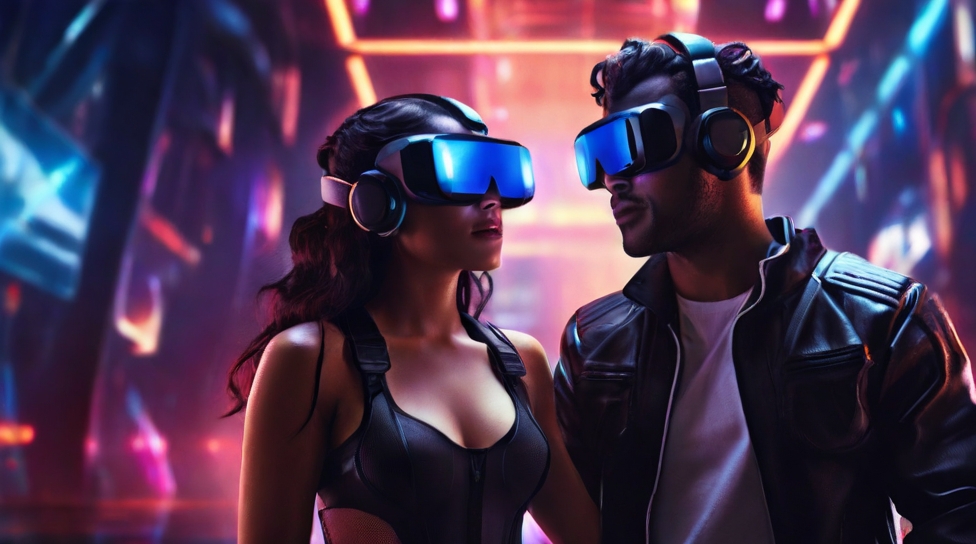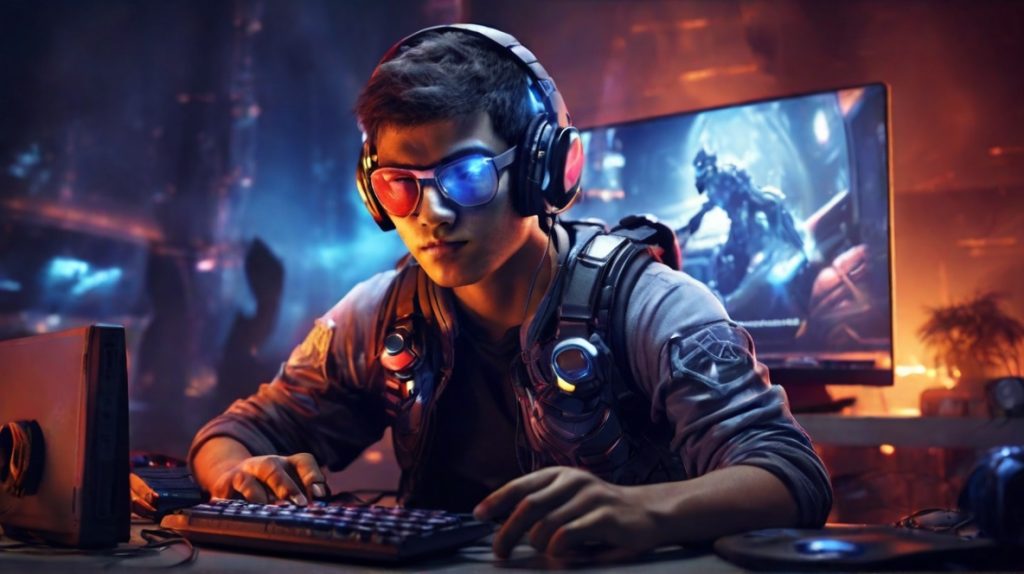The gaming industry has undergone a radical transformation with the integration of artificial intelligence (AI) in game development and gameplay. As AI algorithms continue to evolve, they are unlocking new possibilities for creating immersive, hyper-realistic gaming experiences that were inconceivable just a decade ago.
Here we will explores the current and future applications of AI in gaming, including areas like procedural content generation, NPC behavior, VR/AR integration, and cloud gaming. It highlights real-world examples of pioneering AI gaming innovations and envisions the landscape of intelligent gaming in years to come. However, as with any emerging technology, AI gaming also faces some challenges regarding biases, privacy, accessibility, and job disruption. Potential solutions to overcome these issues are also discussed.
Overall, AI promises an exciting future for the gaming domain, one characterized by boundless virtual worlds, self-learning game engines, and highly customized player experiences. Let’s delve deeper.
AI’s Current Impact on Game Development
Procedural Content Generation
Procedural content generation refers to algorithmically creating game content like environments, levels, characters, quests, etc. instead of manually designing every element. AI techniques like neural networks can analyze vast repositories of game data to learn design patterns and assemble new content accordingly.
For example, No Man’s Sky applies procedural generation to deliver over 18 quintillion unique planets for users to explore. Similarly, Minecraft leverages AI to populate its worlds with varied terrains, structures, and objects. This adds to the sense of wonder and surprise, extending gameplay longevity.
NPC Behavior Enhancement
Non-player characters (NPCs) endowed with life-like intelligence have become vital for immersive game experiences ranging from emotional storytelling to unpredictable gameplay dynamics. State-of-the-art AI allows NPC behavior modeling based on psychological factors like emotions, relationships as well as survival instincts.

In competitive multiplayer games like DOTA 2, NPCs can observe human players’ strategies and counter them effectively. The AI behind alien xenomorphs in Alien: Isolation adapts its hunting tactics after figuring out the player’s hiding spots and escape routes, ratcheting up the horror. Such technology will enable the next level of dynamic social interactions within game worlds.
Optimized Development Workflow
Various AI techniques are streamlining game creation workflows by automating routine tasks. For instance, neural networks can generate character models, textures, animations, etc. while machine learning algorithms can playtest games to detect balancing issues or bugs.
This allows developers to focus creativity on high-level game direction rather than getting bogged down by repetitive building blocks. Startups like Anthropic provide AI tools specifically for accelerating game production.
Integrating AR and VR Gaming Environments
Immersive technologies like augmented reality (AR) and virtual reality (VR) rely extensively on AI for crafting believable environments that respond contextually to users’ actions. Algorithms handle spatial mapping of surroundings, real-time motion tracking, generating relevant 3D overlays etc.
For example, Niantic leverages computer vision and geolocation in Pokémon GO to make virtual creatures appear realistically overlaid onto the physical world. As AR/VR hardware and software continue maturing, such experiential AI gaming will become more ubiquitous.
The Future: Pushing the Frontiers with AI
Hyper-Realistic Digital Humans
One avenue where AI gaming shows great promise is creating ultra-realistic human characters exhibiting true-to-life physical movements and emotional depth. Techniques like video-based motion cloning can capture and replicate the exact gestures and mannerisms of real people inside game engines. Furthermore, complex psychology modeling helps artificially induce emotions, decision making, and reactive dialogues in virtual humans.

Imagine emotionally charged, cinematic game narratives featuring characters that seem as alive as real actors! Cloud Imperium Games is investing heavily in such next-gen character technology called Soul Machines for their epic Star Citizen universe.
Next-Level Environment Simulation
The virtual worlds in tomorrow’s games could end up feeling as authentic as the real world courtesy of physics and climate modeling algorithms. Nvidia’s Material Definition Language (MDL) allows intricate CAD-based material shading parameters to be transported into gaming engines, leading to life-like recreation of materials. Similarly, AI meteorological models can generate dynamic weather patterns and their impact for added environmental realism.
Environmental systems reacting realistically to players’ actions could become a competitive differentiator for big-budget franchises. We’ve already seen glimpses of such innovation in the avalanche dynamics created via material simulation for Death Stranding.
Cloud-Based Immersive Gaming
Cloud technology enables gaming streams to be delivered on-demand across devices, freeing players from platform-locked experiences. When combined with AI, cloud infrastructure unlocks the potential for instantly accessible, hyper-realistic games bypassing individual hardware limitations.
For instance, Microsoft plans to leverage Azure cloud capabilities for distributed physics and graphics computations in future iterations of Flight Simulator, enabling astonishing levels of realism. Google Stadia applies similar ideas for AAA mobile gaming. AI secures a vital role in this ecosystem by handling aspects like predictive resource allocation, graphics optimizations, dynamic latency adjustments etc.

Player-Specific Experiences
Future games could adapt in real-time to match individual players’ preferences, playstyles and skill levels thanks to AI’s predictive personalization capabilities. From tailoring challenges to customizing storylines, virtual worlds will reshape themselves to maximize each player’s engagement.
Amazon’s New World MMORPG plans to achieve this via the Orion AI engine, which models player psychology to serve content that nurtures long-term retention. The platform analyzes quest preferences, social interactions etc. of each user to construct personalized adventures.
Such innovations could diminish differentiation between players, thereby improving accessibility. Designer Will Wright’s Proxi project focuses on AI-powered games reacting uniquely to each player, akin to a “Rorschach Test” revealing their hidden personality aspects.
Self-Learning Game Engines
Currently games are painstakingly updated via patches to address issues that crop up after launch. Future intelligent game engines may continuously self-optimize based on player data instead of depending on developer intervention.
Machine learning algorithms can tweak underlying gameplay parameters, narrative structure or graphics configurations to enhance engagement and performance. This could enable games to perpetually improve themselves while remaining fresh and unpredictable for users. Hadean, a startup spun out of Sony, is building such nanite-based game engines for evolving metaverse worlds.
Challenges to Address
Biases in Datasets
When creating AI gaming systems, developers often utilize datasets containing traces of human biases around race, gender etc. As algorithms derive learning from such data, they risk perpetrating and amplifying those same toxic biases.
For instance, face detection algorithms still struggle with darker skin tones due to under-representation in training datasets. Such issues could propagate into avatar creation tools, NPC behavioral modeling etc. Game studios must formulate policies, audits and bias mitigation processes to tackle this critical problem. Diversifying data samples, emphasizing fairness metrics and enabling user reporting of biases are some suggested solutions.
Game Addiction
The highly personalized experiences and reinforcement learning used to maximize player retention could also encourage addictive tendencies for some. Vulnerable groups like children and those prone to compulsive behaviors may face higher risks in this regard.
However, incorporating AI-based indicators to detect problematic usage patterns can mitigate such issues e.g. frequency, timing, spending levels etc. Game engines may then throttle dynamics fostering addiction, like progression system optimization. Gamifiers that apply motivating principles ethically also need to be encouraged.

Invasion of Privacy
Vast amounts of player data will be accumulated to enable hyper-personalized gaming including biometrics, inputs, conversation history etc. Ensuring such data remains secure and private is paramount, especially with threats like deep fakes on the rise.
Strict data governance protocols need implementation right from the game design stage, encompassing cross-departmental collaboration. Moreover, providing players transparency into what data gets collected and options to delete records could help mitigate privacy implications.
Unemployment
The rapid improvements in AI-based game creation tools could significantly automate manual processes like world building, writing fetch quests etc. This may displace jobs and disrupt developers who lack retraining opportunities.
However, equipping creators with multifaceted, future-ready skill sets could help counter such impacts. Many emerging roles like AI behavior designers, metaverse architects etc. will also arise for gaming talent. Furthermore, democratizing advanced game development via consumer-facing no-code tools presents fresh employment avenues.

Bias Against Accessibility
Despite holding high potential to support disabled players through difficulty adjustments, input alternatives etc. AI systems may instead optimize solely for majority groups without accommodating minorities.
Concretely implementing accessibility guidelines during all phases of design thinking is thus vital. Playtesting via a diverse tester panel can reveal such gaps early. Voice recognition capabilities may also exclude certain communities if not coupled with subtitles etc. Hence building flexibility into AI gaming systems remains crucial.
The proliferation of artificial intelligence is ushering in a new golden age for the world of gaming. We are transitioning fast from the constraints of scripted content and rule-based behaviors towards almost human-like NPC interactions, hyper-realistic worlds and real-time personalized experiences. Cloud infrastructure and pervasive connectivity will expand this high-fidelity gaming revolution across multiple devices and input modalities.
However, some ethical challenges around algorithmic bias, privacy concerns, propensity for addiction and workforce disruption must also remain at the forefront of policy conversations regarding applied AI. Game creators have to embed moral considerations firmly during decisions on leveraging (or developing) generative/adaptive algorithms for entertainment applications. Incorporating diverse viewpoints and foresight into game designs can help address these issues responsibly.

Ultimately, AI will become the Canvas upon which creative dreams of unprecedented scope will manifest as gaming realms. The excellent future of AI gaming based on moral foundations lies in crafting worlds facilitating self-actualization, togetherness and joy for all. The possibilities are endless for those who seek to collaboratively elevate the human spirit through technological artistry infused with wisdom. If realized thus, the era of artificial intelligence promises to profoundly enrich the meaning of play.
Copyright©dhaka.ai
tags: Artificial Intelligence, Ai, Dhaka Ai, Ai In Bangladesh, Ai In Dhaka, USA



